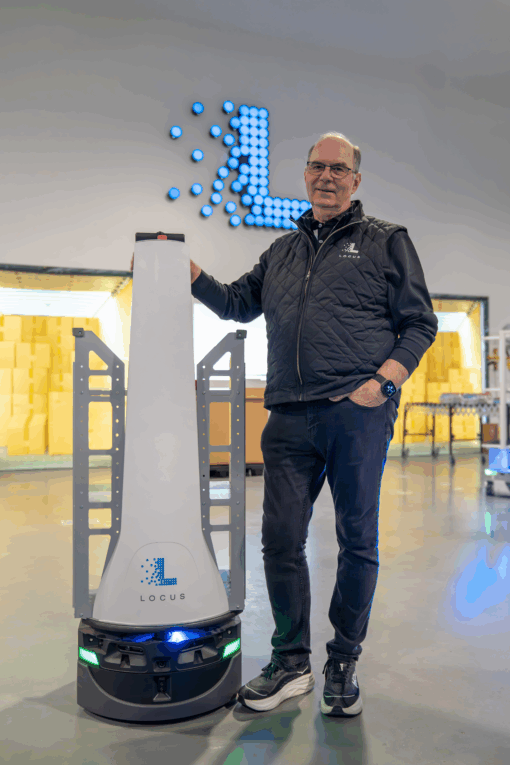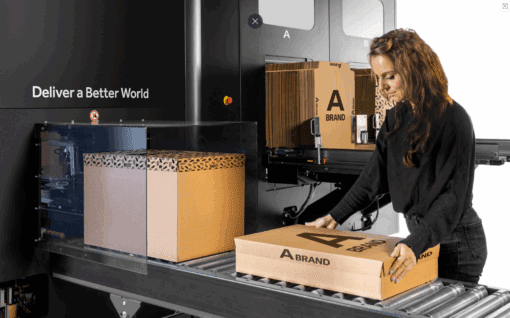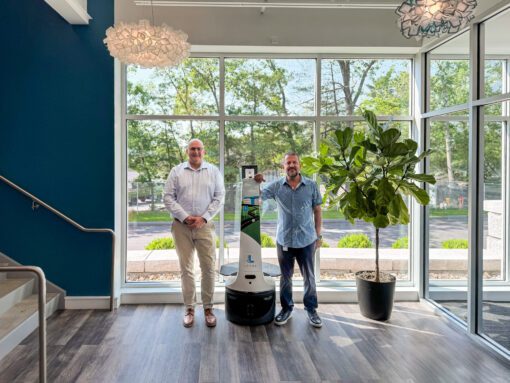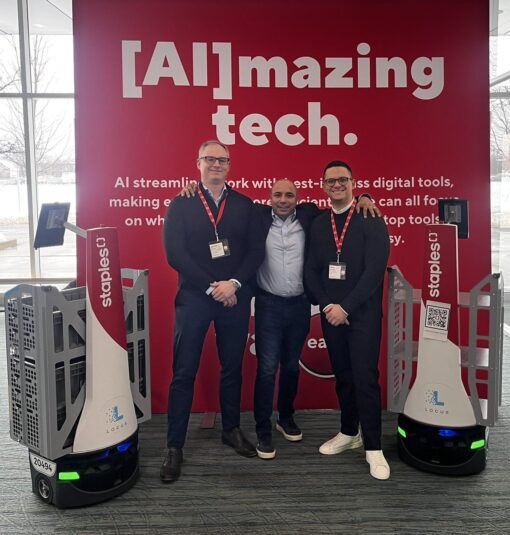WP: How to achieve 400 UPH with Locus Fast Pick
WP: How to achieve 400 UPH with Locus Fast Pick Download Now!
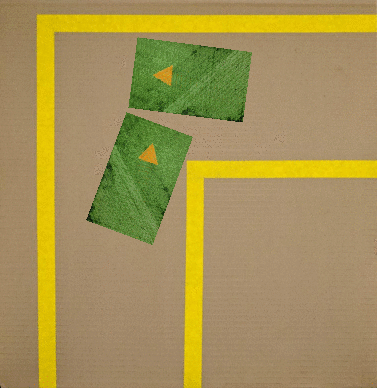
At Locus, we’re hyper-focused on delivering innovative and technologically advanced warehouse robots that optimize worker productivity and maximize customer ROI. One of the questions we get a lot is about why we built a circular robot vs. a rectangular robot. In a perfect world, a warehouse robot should be able to carry a heavy, large load and easily navigate in a narrow aisle, but, unfortunately, physics won’t allow for this (curse you physics!). As the saying goes, you can’t put 10 pounds of … “stuff” in a 5-pound bag. So, we’re left to consider the tradeoffs in developing our product.
The Moving Sofa Problem
One of the ways that I think about the trade offs between rectangular and circular robots is the Moving Sofa Problem*. This is an open mathematical problem about the maximum area you can move an object around a 90-degree corner of fixed size. It’s not a perfect representation of what I’ll call the “Moving Robot Problem”, but it’s interesting nonetheless (especially if you like math).
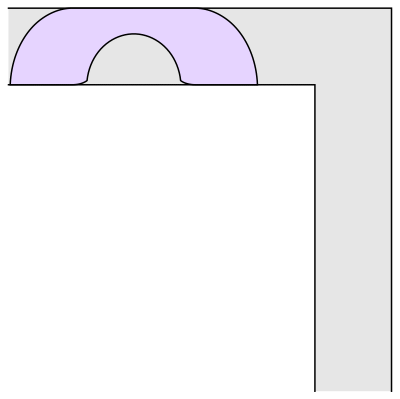 Image source: Dan Romik
Image source: Dan Romik
The Moving Robot Problem
When we think about maximizing customer ROI, we want to give robots the ability to travel and maneuver efficiently within the fixed space of a warehouse. Therefore, within an aisle of a certain size, bots should be able to pass each other, turn in place, and handle the tight corners prevalent in some facilities. That’s why the robot’s shape is critical to its success and efficiency in this crowded and dynamic environment.

Circular robots (when sized appropriately) can handle this easily. If a circular robot is slightly smaller than half of the aisle width, they can obviously pass bidirectionally. They can easily change direction by turning in place within the aisle and even pass bidirectionally in a corner – all without an issue. This minimizes time-wasting travel distances while significantly optimizing key operational metrics such as Units per Hour (UPH) / Lines per Hour (LPH), and order cycle time.

Coming from a world of rectangular push-carts, developing a rectangular robot seems like an obvious choice. However, rectangular-shaped robots struggle with many of these scenarios. While they are able to pass in an appropriately sized aisle, they can’t handle corners well and they certainly can’t easily turn around in the aisle. To manage this challenge, it is often necessary to limit the travel of rectangular robots to one-way, one-bot-per-aisle workflows.
The downside of this approach is that it significantly impacts the same key operational metrics (UPH)/LPH, cycle times, etc.) when compared to round bot designs. Because of the need to use one-way streets, robots are limited in their ability to maneuver. They must now travel longer distances to reach their designated pick locations. This becomes a significant concern when they encounter obstacles, congestion, blocked aisles, and more. When a rectangular robot is confined to a follow-bot configuration, order cycle time increases and worker pick speeds drop. That’s not the kind of trade-off a knowledgeable warehouse operator is willing to accept when tasked with meeting customer SLAs.

Size (and Shape) Does Matter
Circular robot designs are generally superior to rectangular designs. They’re quick, nimble, and highly flexible in a wide range of environments. They let warehouse operators utilize their entire warehouse, without reconfiguring their operation. And, when used with Locus’s patented, multi-bot picking methodology, they minimize travel distance for both robots and workers, allowing operators to at least double their UPH/LPH, and lower order cycle times. As much as we’d like to see rectangular robots deliver the same results, it’s impossible to ignore the reality of physics.
As you consider your automation options, be openminded to leaving behind the obvious (rectangular cart / rectangular robot), and consider that advances in technology often drive unexpected solutions. Demand measurable, demonstrable results, and choose the path that will drive productivity and expandability in a real-world warehouse environment. Do not allow your affinity for the familiar override your respect for science.
The enthusiastic customer testimonials Locus has received from the likes of DHL, GEODIS, and others resoundingly validate the assertion that size (and shape) make a difference in warehouse performance. Understanding these dynamics yields a better outcome for the knowledgeable warehouse operator.
* Grateful acknowledgement and sincere thanks to Dan Romik for permission to allow us to use the animation used in his blog post, "The Moving Sofa Problem", UC Davis, June 2016. You can check out Mr. Romik's amazing work here.

